Resources
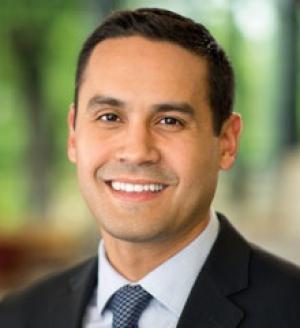
Eric D. Barreto When I was prepping my first online class, all I wanted was for someone to show me how to teach online. I wanted techniques. I wanted examples of best practices. I wanted a template upon which I could build. But I quickly learned that the hardest part..

There appears to be hopeful evidence that the long recession is over and donor money is starting to trickle back into theological schools. Grant initiatives are starting to bloom (some very substantial), faithful donors are starting to fulfill deferred promises...
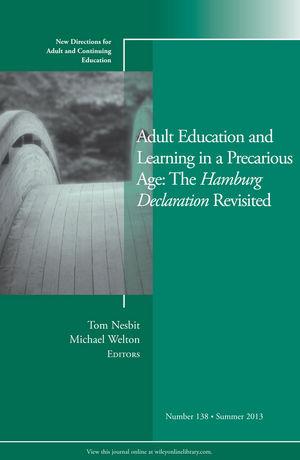
In 1997, the International Conference on Adult Education (CONFINTEA) crafted the visionary Hamburg Declaration on Adult Learning and Agenda for the Future (UNESCO, 1997) claiming that adult education could contribute to “a world in which violent conflict is replaced by dialogue, a culture of peace based on justice . . . and the creation of a learning society committed to social justice and general well-being” (2-3). What is the value of an idealistic treatise like the Hamburg Declaration? And what does it matter to theological education? Religious education faculty want their teaching to impact student learners and to make a positive difference in their global communities. In an ever-changing world, it is essential that theological educators situate their teaching within the larger sociocultural milieu, recognizing how contextual realities inform and shape both the process and content of adult learning. The Hamburg Declaration demands that educators heed its call and answer its pedagogical implications. Contributors to this current volume were invited to provide a critical analysis of the Declaration’s core themes, particularly in light of political, social, economic, and cultural transformations occurring throughout the world today (4). They chronicle the challenges and opportunities that adult education has had in issues surrounding democracy, women, literacy, work, environment, technology, international policy, and economics – particularly in the years since the declaration was published. While today’s pressing concerns may differ from those in 1997 – for example, the changing nature of work and unprecedented advances in technology – nevertheless, a review of these themes may be instructive for how educators might examine related issues within the context of religious and theological education. The Hamburg Declaration follows from the emphases of adult educators such as Brookfield, Freire, Hooks, and Illich, who affirm the political nature of education. Political and social realities do indeed shape the context of student learning. In cultivating appropriate pedagogical strategies to address the most urgent global issues, Adult Education and Learning in a Precarious Age suggests that we pay heed to the process of framing problems and how these inform solutions. Reiterating the emphasis in Hamburg, co-editor Welton affirms an “ethic of dialogue respectful of the different moral and spiritual options” that is “best able to promote the learning process” (17). Such dialogue is essential as teachers engage students in critical reflection of relevant global issues. Yet, the preliminary analysis by the authors of this volume invites further interaction from an explicitly theological perspective. Although one may question the actual progress made on the concerns identified in the Hamburg Declaration and the role of adult education, this work still serves as timely inspiration for values-driven religious educators who are motivated by the pursuit of truth, justice, and ethics; who long to foster transformative education with impact beyond the classroom. As Nesbit, this volume’s co-editor, asserts, “What is possible is shaped, in part, by our visions” (98).
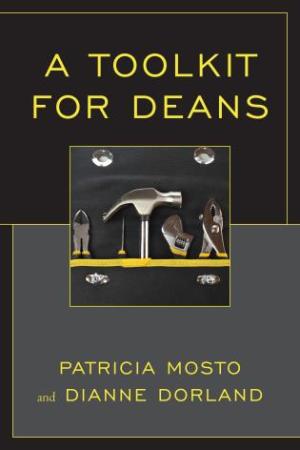
The authors chose a catchy title, but it is difficult to find the “tools” for a dean’s toolkit in the book. The book This work consists of common sense advice with scenarios and short case studies that illustrate situations, dilemmas, and challenges commonly faced by deans in seven key areas, which make up the chapter divisions: managing self, leading peers, leading and managing supervisees, leading faculty, leading departments, managing students (and their parents), and managing up. The common sense advice may be helpful to novice deans lacking administrative experience, but will be of little value to seasoned deans, associate deans, and department chairs. For example, the first chapter, on “managing ourselves,” consists of simple, generalized, pragmatic advice on: office management (“You will need to make decisions on what you will delegate, which tasks and responsibilities belong to whom, and when associate deans or senior staff may represent you” [4]); scheduling (“Your staff must also understand that because of the responsibility of the dean’s position, you may be out of the office frequently” [4]); wardrobe (“An appropriate office appearance and staff wardrobe signals respect for the dean’s office and its functions” [4]); and how to handle phone calls, visitors, mail, and filing. In the scenarios and case studies the authors do well in presenting present difficult situations faced by deans. The examples range from relatively mild procedural and administrative issues to dysfunctional personal and contextual (cultural and systemic) issues. For novice deans, or those considering this job, these will provide a sobering reality check to any romantic notions. However, there is no central or systematic framework that can help a dean discern how to approach the challenges of the office. In other words, there is no discernable theory of practice for the work of the dean, aside from a strong advocacy for collaborative (“shared”) leadership, a concept for which the authors rely on Pearce and Conger’s Shared Leadership: Reframing the Hows and Whys of Leadership (Thousand Oaks, CA: Sage Publications, 2002). It is uncertain whether one consistent thread in the scenarios and case studies is a product of the scope of the authors’ experience, that of the subjects of their studies, or a reflection on the culture of higher education. That thread is the manner in which solutions for many of the difficult scenarios and cases are found. Many, if not most, of the difficulties are resolved by transferring under-functioning or acting-out faculty and staff to other departments, accommodating underperformers by offering incentives (reduced teaching loads, early retirement options), wishfully waiting out a troubling situation, triangulating provosts and department chairs, or allowing agency to the willful or weak in the system (an invasive human resource department, persons unable to do their work, and so forth). The authors are correct that “In the academic environment, deans provide the delicate but crucial backbone of university decision making” (66), but that requires the practice of courage in leadership in greater measure than most of the scenarios illustrate.
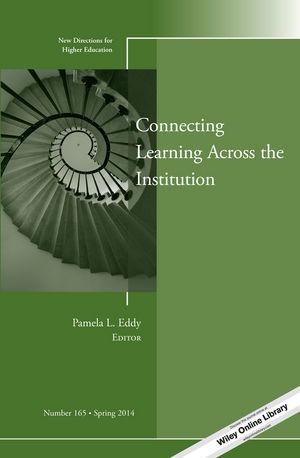
Through a framework of three segments that set educational context, demonstrate integration, and provide planning models, Pamela L. Eddy’s edited volume of essays explores the question of learning across the institution by framing research around questions that consider stakeholders, institutional populations, and applicability of theoretical approaches to learning. Offering both a scholarly focus and practical applicability, this volume brings together and advances the way faculty think about learning, it highlights the common features that stakeholders share, and presents insight about how to support faculty learning and development. In the initial section, “Setting the Context,” Barber’s essay “Integration of Learning Model: How College Students Integrate Learning” provides a helpful introduction to the study of integrated learning for undergraduate student populations. He identifies the issues contemporary students face – compartmentalization, expanding digital tools, lack of reflection – and urges faculty to develop a theory of learning that is both intentional and explicit in its awareness of these issues and mindful of the shifting demographics of the undergraduate. Further challenges to faculty vision are suggested by Eddy’s “Faculty as Border Crossers,” whose analysis of Fulbright faculty reveals that faculty are forced to confront their assumptions about teaching and learning in light of direct exposure to new environments, which can include language, systems, space, or values. Closer to home, Moor and Mendez’s “Civic Engagement and Organizational Learning Strategies for Student Success” proposes that a deliberate approach to cultivation of civic values both inside and outside the classroom holds great potential for integrated learning and student success. After Leslie’s chapter on stakeholder impressions and demands regarding learning and assessment, Wawryznski and Baldwin’s essay encourages academic leaders (beginning with chief academic officers) to model and promote (both in and outside of the classroom) the types of “high-impact practices” that make for a holistic approach to higher education. Zakrajsek’s “Developing Learning in Faculty: Seeking Expert Assistance from Colleagues,” encourages a return among faculty to the types of learning cultures that are formulated within a graduate experience. In addition to seeking feedback regarding classroom teaching, Zakrajsek reminds the reader that disciplinary expertise aside, an interprofessional approach to the academic culture is recommended for both student and professorial success. The concluding essay in the second section, VanDerLinden’s “Blended Learning as Transformational Institutional Learning,” encourages thoughtful consideration of hybrid course models that include critical reflection at multiple levels in order to achieve the greatest level of success: student, professorial, and institutional. The final portion of this collection addresses consequences of the theories and practices outlined thus far. While authors Amey, Neumann, and Bolitzer propose organizational frameworks and strategies, Chance identifies connections and key issues that bring all of the groups identified in this volume into conversation with one another. The notion that faculty must scaffold disciplinary content with institutional and civic values is growing increasingly common. Irrespective of Fulbright activity, more and more faculty are being challenged to be “border crossers” within their field and across the campus. This volume of essays provides an excellent start to considering both the theoretical and the practical elements and implications of these shifts in higher education in North America.
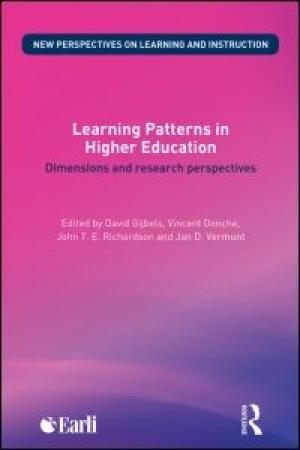
Researchers and teachers will find this book a useful resource on student learning and enhancement. Based on twelve international collaborative research units’ seminars sponsored by the Scientific Research Network of the Research Foundation Flanders at Antwerp in December 2011, the volume reports empirical research and theories on educational practice to support studies of learning pattern development in higher education. Thirteen of fifteen essays are multi-authored, and the contributors are mostly higher educational specialists from Belgium, Finland, the Netherlands, and Spain. A few essayists are from Ireland and United Kingdom. Though written from the European continent, many of the learning concepts, strategies, and patterns – cognitive strategies, factors for learning patterns, and learning-learner characteristics – are transposable in higher education. A few essays explore pedagogy in global contexts. One article in particular compares multidimensionality and learning differences between students from the Netherlands, Sri Lanka, Indonesia, Spain and Latin America, and Hong Kong. Six chapters in Part I examine dimensions of learning patterns. Given the twenty-first century’s multifaceted learning environment, educators face the challenge of presenting learning integratively and creatively so as to motivate learners in their respective contexts and learning patterns. The authors claim that individual learner-oriented approaches and student subgroup orientations in learners’ cultures affect learning presage, perceptions, processes, patterns, and outcomes. The book claims that research continues to validate self-directedness among mature adult learners amid other reasons for facilitating effective adult learning. Nine chapters in Part II engage aspects of measuring student learning patterns and development. Core measurement issues include (a) learners’ academic achievements, (b) motivations and cognition on measuring achievements, (c) student teaching experience as a process for their deeper learning, (d) transition from higher education into the workforce and professional service, and much more. Teachers may be interested to discover that learners’ self-confidence and self-directedness are crucial to inspire their performance. Even so, perceived workload, task complexity, working memory capacity, and attention span directly affect learners’ degrees of engagement. The effectiveness of a pedagogical mode – whether it is lecture-based, case-based, an immediate mixed-learning model, or a gradual mixed-learning model – will depend on the student’s motivation and learning profile. The empirical settings and the theories presented are not directed at the teaching of religion and theology. Students of religious studies are not among the human subjects identified in the reported empirical investigations. Thus, for Teaching Theology & Religion’s readership, the book is not as relevant as other edited volumes including: Andrea Sterk’s Religion, Scholarship, and Higher Education (University of Notre Dame Press, 2002); Richard Devine, Joseph Favazza, and Michael McLain’s From Cloister To Commons: Concepts and Models for Service Learning in Religious Studies (Stylus, 2002); Sherry Hoppe and Bruce Speck’s Identifying and Preparing Academic Leaders (Jossey-Bass, 2004); and David Smith and James Smith’s Teaching and Christian Practices: Reshaping Faith and Learning (Eerdmans, 2011). Several essays in Learning Patterns in Higher Education allude to the importance of learners’ contexts for constructing effective pedagogical models. However, the book does not examine the many sociopolitical aspects that have impacted learning (for comparison, see Liam Gearon and Sue Brindley’s MasterClass in Religious Education, Bloomsbury Academic, 2013). Nonetheless, this book is well researched. Readers will profit from its extensive treatment of learning theories, and it will enhance an educator’s overall teaching competence. Educational psychology and theories of human development are embedded in many of these theoretical explorations, and therefore, the findings in this book may be transferrable to the practice of religious studies or theology.
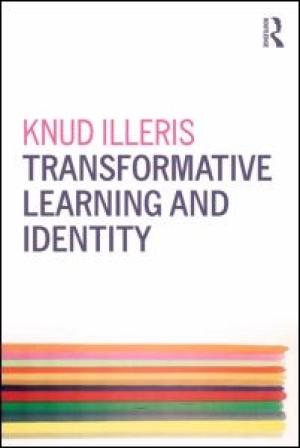
The subject of theology and religion is related to the human desire for and experience of transformative inner experience. Contemporary theological education tends to especially draw students who are internally motivated for their own transformation or for facilitating other’s transformation through their ministry. In this sense, Transformative Learning and Identity touches upon the DNA of theological and religious education. This book is one of the fruits of the author’s research on transformative learning, which developed from another of his books, How We Learn (London, U.K.: Routledge, 2007),a comprehensive account of general learning theory. In Transformative Learning and Identitythe author reviews the theoretical development of the concept of transformative learning through a survey of knowledge and research to “understand and explain how the most rewarding and far-reaching human learning processes take place and why and how they have become so important in today’s world” (xiii). As such, this is not a self-help book with pedagogical strategies. What the author means by “today’s world” carries the foundational assumptions of this book. He calls this contemporary context late-modernity which includes an economic environment that allows upward mobility among classes heavily dependent on the performance of individuals. For him, this is the context of the individualism from which the quest for identity rises. Individualization provides the possibility “to create one’s totally own existence in the very best and personal way – if only one was able to manage all the many life situations and make the right choices all throughout” (62). With such an ideal of individual choices, the responsibility of one’s own accomplishment of the ideal rests on individual will and capacity. Transformation then becomes a crucial task for individuals to accomplish. Illeris’ main conceptualization follows from Jack Mezirow’s understanding of transformative learning – a process of meaning creation, of which elements like individual experience, critical reflection, dialogues, holistic orientation, awareness of context, and authentic relationships are important building blocks. Using this foundation, Illeris surveys the thoughts of several scholars to further exploration of transformative learning. After a brief survey of psychoanalytic theories of change and a cursory survey of emancipating pedagogical theories including Paulo Freire’s critical theory, and one feminist approach developed in the 1980s, he surveys the theories of Yrjö Engeström, Robert Kegan, Peter Jarvis, and Mark Tennant. Through his analysis of the development of various theories in Part I, he concludes that transformative learning “comprises all learning that implies change in the identity of the learner” (40). Thus, he devotes Part II to identity development through the theories of Erik Erikson, Thomas Ziehe, Kenneth Gergen, Mark Tennant, Etienne Wenger, Pierre Bourdieu, Anthony Giddens, and Zygmunt Bauman. In Part III, he examines transformative learning from different standpoints such as developmental stages, the processes of progressive and regressive transformation, motivation and identity defense, personality and competence, and its habitus as in school, work, individual, and society. The author’s intent is to build a more authoritative definition of transformative learning through a theoretical survey of the history of the concept. Along with the survey, his understanding of regressive transformative learning is an important contribution. Regressive transformative learning happens when expected progressive transformative learning is frustrated but still results in identity change. When it happens simultaneously with another progressive transformative learning experience, it can result in identity transformation. There are several points that may need to be augmented to bring out this book’s full potential for religious and theological education. As Illeris writes from his location in Denmark, despite some experience in Teachers College, Columbia University, this work seems to mostly assume a middleclass European or European American context. Hence, it needs to be translated with intercultural sensitivity to find relevance in the context of diversity of cultures, power dynamics, socio-economic classes, and genders in the twenty-first century higher education. A discussion about emancipatory transformation and deeper reflection on critical pedagogies like those of Freire and McLaren would help translate this work into theological school contexts. Another useful dialogue would involve the topic of spirituality. From a Christian point of view, transformative learning can be conceptualized as involving the spiritual engagement of a person. This book is a helpful theoretical resource for those who want to conceptualize impactful teaching and learning experience. I recommend exploring this book with a theological lens in order to dialogue with the different theories surveyed: it could yield helpful dialogical points that could advance the search for realization of transformative learning in theological school contexts.
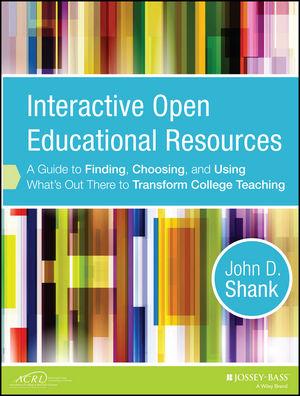
Shank’s Interactive Open Educational Resources is a welcome resource for any educator needing guidance as to how best to employ interactive learning materials (ILMs) in their classroom. The author’s style throughout is that of an encourager. He wants instructors to understand that ILMs are something more than using an online book or PowerPoint presentation. He claims that ILMs have the potential to address “significant modern-day learning challenges such as student preparedness, student engagement, and attentiveness” (7). The book is divided into three sections. The first provides an introduction, answering the question “What are Interactive Learning Materials (ILMs).” The second is devoted to “Finding ILMs.” And the last section concerns “Choosing and Using ILMs.” In the opening section, Shank defines ILMs and their relationship to open educational resources (OERs). He writes that ILMs are not easily defined because they have no universally accepted design and structure. Readers discover that ILMs should be interactive, online, and teach a specific objective or set of objectives. They should also contain one or more of the following processes – “applying, analyzing, and problem solving” (13). The second part of this book is a resource guide to locate specific ILMs. The author claims that by using specific search strategies, and key digital repositories and libraries, the process of locating ILMs is made easier. A common thread found throughout this section is that of “accessibility.” The author gives priority to sites freely available and user friendly. Shank identifies specific collections of ILMs – including online educational repositories, media sites, museums, educational institutions, and professional organizations, as well as government and nongovernment agencies. In essence, “knowing where to look will save a lot of time and bring us closer to acquiring the right kinds of resources” (23). For example, the author asserts that MERLOT is a general repository containing thousands of free, peer-reviewed, high-quality ILMs covering most disciplines. The OER Commons is a similar repository that “functions as a portal for teaching and learning materials around the world” (46). Educators are encouraged to be contributors to the repository’s resources. Beyond North America, readers are introduced to ARIADNE, a European-based repository committed to the development and exchange of learning resources, and JORUM, a British-based repository. Universities are another source of high quality ILMs. However, because of their vast numbers, the author suggests starting with institutions with known collections, or where the educator has a personal connection. Shank also expounds on a number of other educational repositories including the North Carolina Learning Object Repository (NCLOR). The author also encourages educators to give consideration to non-profit organizations like museums, professional organizations, and governmental as well as non-government agencies – groups that have “increasingly integrating interactive learning materials into their online resource offerings to educationists at all levels” (95). Among those highlighted is the Smithsonian Institution that offers innumerable educational resources. Shank encourages educators to remember the “three main areas of selection criteria – content, engagement, and design (CED) – to evaluate the quality of the identified ILMs” (31). Nonetheless, the overriding consideration should be given to content and accuracy. In the third part, the author offers suggestions for choosing and using ILMs. He encourages educators to find ILMs that are appealing and address different learning styles. He writes that students will be more likely to spend time concentrating on and engaged with ILMs if their environment is more immersive with materials, entertaining, or compelling (144). ILMs can be incorporated as course blogs, wikis, social networking sites (such as Facebook) and learning management systems (LMS). Instructors could also link ILMs to their online course syllabus. Shank contends that ILMs provide valuable feedback concerning student performance. Assessment is critical since it shows instructors whether course learning objectives are being achieved and makes the student more accountable for work they do (144). ILMs can also help struggling students to review or come to understand key concepts at their own pace (133). As the author indicates, “the more learning activities engage students, the more likely it is that the ILMs will have robust feedback” (122-123) Interactive Open Educational Resources is a cutting-edge book that provides transformative approaches to education. It is also a valuable resource guide. It will assist instructors to make a new kind of education possible in the classroom.
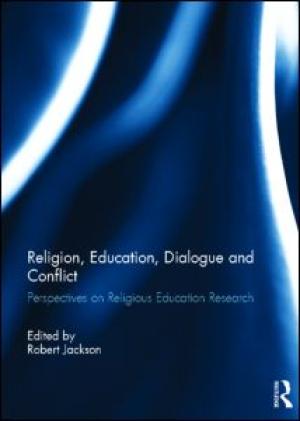
Religion, Education and Society details research on the role of religious education (RE) in the secondary school system in the United Kingdom. The book is a selection of papers first presented at the conference “Religion in Education: Findings from the Religion and Society Programme” held at the University of Warwick (July 2011). The collection of contributions examines young people as they relate to religion in various settings. The study is diverse in terms of the religions included (Christianity, Islam, and Sikhism). Chapters reveal how young people reflect on religion in the classroom, with peers, in their families, in religious communities, and in wider society. Chapters report on findings related to three research areas. The first part consists of four chapters reporting on “Young People’s Attitudes to Religious Diversity.” Findings reveal that young people’s attitudes toward religion in general and to religious diversity are more strongly influenced by the practice and perceptions of religion in the broader community than by RE in the classroom (13-26). Research exposed a potentially negative result of school-based RE in contexts characterized by low levels of religious literacy; that information learned can be used to ridicule religious peers rather than to further mutual understanding (27-30). Contributors paint a picture of factors that influence religious faith among young people including religious affiliation, participation in public worship, personal faith practice and belief, and perceptions of God (31-60). The second part includes two chapters addressing the question, “Does Religious Education Work?” In the introduction to the volume, the editors identify two primary reasons for RE in public schools: (1) that religion is an integral part of human experience and worthy of examination, and (2) that the study of religion is instrumental in promoting social cohesion and enhancing the personal development of young people (5-11). Unfortunately, RE often suffers from a lack of clarity in purpose – thus hindering its intended outcomes. Findings provide insight on how postmodern thought, a constructivist philosophy of education, and contemporary societal realities have made it difficult to maintain a unified purpose for RE (61-80). The third part comprises seven chapters exploring the role and impact of RE in diverse contexts (81-169). Research presented describes the impact of various aspects of RE programs including curricula, teaching methodology, and the role of instructors in shaping the religious identities of young people. Emerging from these pages are practical guidelines for administrators, curriculum developers, and instructors. Chapters provide religious communities with workable models for partnering with RE programs in passing faith traditions on to future generations. A conspicuous strength of this book is critical analysis looking at factors influencing the effectiveness of RE in public schools. As such, the volume is particularly valuable for faculty teaching in RE programs. Consequently, the work is a significant contribution to both theory and practice of RE. Religion, Education and Society is to be commended for clarifying the purpose and presenting best practices in RE in public educational settings. Working through this volume will reward those engaged in teaching religious studies.
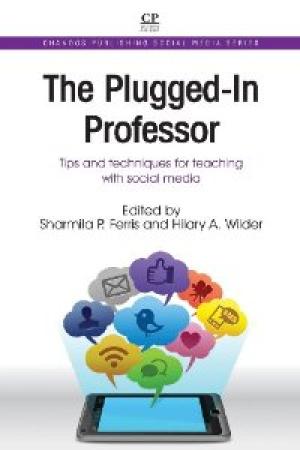
This volume is designed more like a handbook than a piece of prose. Aside from the preface that details how the volume is arranged and how each successive chapter is outlined, each chapter (twenty-five in total) represents a stand-alone essay that describes how an instructor can integrate a piece of social media into her or his curriculum and assignment portfolio. The essays are divided into four parts. The essays in Part 1, “Research, Writing and Information Fluency,” focus on applications of social media that challenge students to develop effective research and writing skills. The essays on “sharing” sites are of note because they offer instructors insight on how to use social media sites that students are already using to share research through bookmarking cultural artifacts. Part 2, “Communication and Collaboration,” is divided into two sections. The first section focuses on instructional communication through social media. Each social media outlet examined in this section is a communicative tool (for example, Wimba or YouTube) that can be re-allocated for educational purposes. The second section of Part 2 concerns issues of collaboration in terms of students working together on educational projects through social media tools such as Google Docs, study blogs, and group-designed wikis. Part 3, “Critical Thinking and Creativity,” is also divided into two sections. The first section considers how students can demonstrate critical (and, I might add, culturally perceptive) thinking through social media outlets such as Tumblr and Facebook. Students are challenged in these sections to examine social trends and personal expressions offered by users of these social media outlets to ascertain how persons learn and demonstrate social ethics or personal and professional development. The second section focuses on creative final course projects such as digital storytelling or video streaming presentations. Part 4, which concludes the volume, focuses on integrative learning, on integrating research, communication, collaboration, critical thinking, and creativity into one social media project. The final essay is of note here because it describes how students conducted a “social media campaign” through Twitter (xxvii). The students researched a client, communicated with opinion leaders in the client’s field, and promoted the client’s cause through critical reflection and creative engagement. The Plugged-In Professor clearly articulates that learning can be promoted in a host of ways through the use of social media. Therefore this is a valuable resource. The social media savvy instructor will be able to wade through the technical language with ease and find projects that he or she can use in class. However, the digital immigrant or digital alien may be overwhelmed at first. This volume can be read straight through, but one is likely to get bogged down in the various approaches and creative projects. It may be more helpful to read this volume like a tasting menu, sampling this Twitter-based exercise or that exercise for Google Docs. Perhaps it could be seen in a similar light as the Teaching Theology & Religion “Teaching Tactics.” Regardless of how one reads the material, the instructor should be careful to assess each project’s usefulness before implementing a social media project. The only real limitation to this volume is that the field of religious studies and theology was not represented, but religion and theology faculty can adapt these projects for their courses. For example, I was challenged by some of the essays in Part 1 to develop a wiki group project for my Pentateuch course. That said, it would be have useful and encouraging to see at least one sample of how social media has been used in a religious studies or theology course.